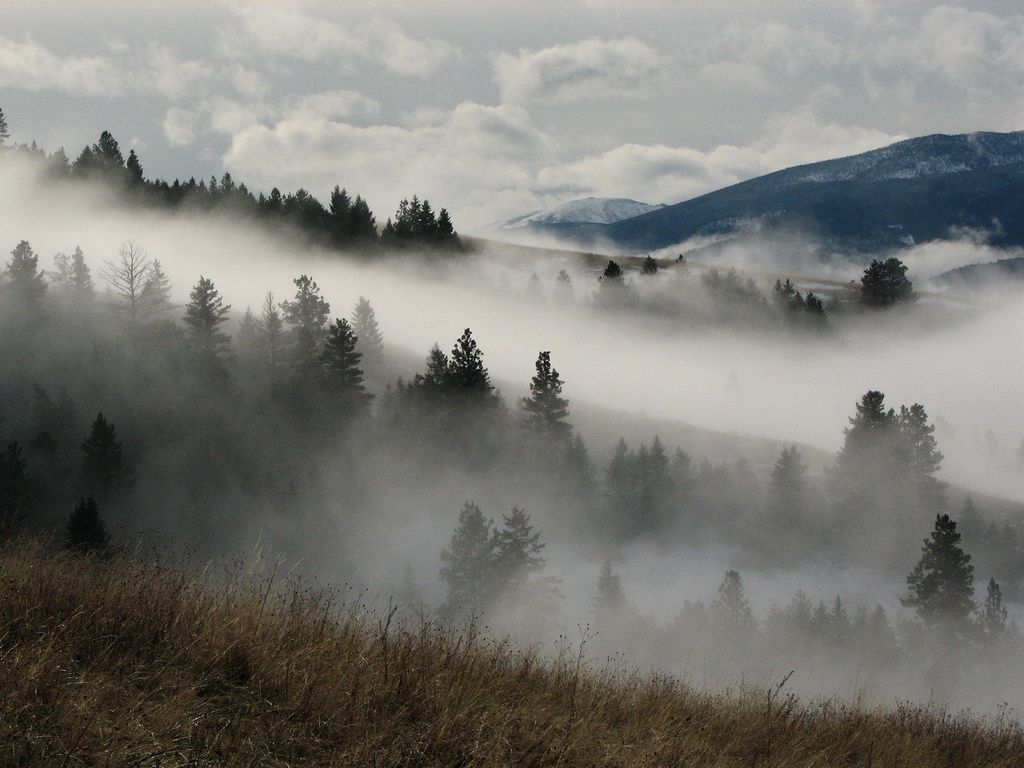Lenticular clouds are among nature’s most striking formations, capturing the imagination of pilots, meteorologists, and aviation enthusiasts while simultaneously presenting significant challenges for flight safety.
🌤️ The Mesmerizing World of Lenticular Cloud Formations
Standing like giant flying saucers in the sky, lenticular clouds represent one of aviation’s most fascinating meteorological phenomena. These lens-shaped cloud formations appear stationary, hovering near mountainous regions with an almost supernatural stillness. Their distinctive appearance has sparked countless UFO reports throughout history, but for pilots and aviation professionals, these clouds signal something far more earthly and concerning: severe atmospheric turbulence and challenging flying conditions.
The visual appeal of lenticular clouds cannot be overstated. Photographers travel thousands of miles to capture their ethereal beauty, while social media platforms overflow with stunning images of these atmospheric sculptures. However, beneath their captivating exterior lies a complex atmospheric phenomenon that demands respect and understanding from anyone involved in aviation operations.
Understanding the Science Behind Lenticular Cloud Development
Lenticular clouds, scientifically known as altocumulus standing lenticularis, form through a precise meteorological process involving topography, wind patterns, and atmospheric moisture. When stable, moist air flows over a mountain or mountain range, it creates waves in the atmosphere similar to water flowing over rocks in a stream. These atmospheric waves extend downwind from the mountain barrier, creating alternating areas of rising and sinking air.
At the crest of these waves, where air rises and cools, moisture condenses into visible cloud formations. As the air descends on the other side of the wave, it warms again, causing the water droplets to evaporate. This continuous process creates clouds that appear stationary, even though wind is constantly flowing through them at significant speeds. The cloud itself remains fixed in position while the air molecules continuously move through it.
Critical Atmospheric Conditions for Formation
Several specific conditions must align for lenticular clouds to develop. First, a stable atmospheric layer must exist where the air resists vertical movement. Second, sufficient moisture must be present at the altitude where the wave crests. Third, wind speed must remain relatively constant with altitude, typically ranging between 15 and 40 knots. Finally, the terrain must provide adequate vertical displacement to initiate the wave action.
These formations typically occur between 6,500 and 16,500 feet above sea level, though they can develop at higher or lower altitudes depending on atmospheric conditions and mountain height. The most spectacular displays often involve multiple stacked layers, creating what meteorologists call a “pile d’assiettes” or stack of plates appearance.
✈️ Aviation Hazards Associated with Lenticular Patterns
While lenticular clouds offer visual splendor, they represent serious aviation hazards that pilots must navigate with extreme caution. The calm appearance of these clouds belies the violent atmospheric conditions they indicate. Understanding these dangers is essential for maintaining aviation safety in mountainous regions worldwide.
Mountain Wave Turbulence and Aircraft Performance
The primary danger associated with lenticular clouds is mountain wave turbulence. These atmospheric disturbances can produce vertical air movements exceeding 2,000 feet per minute, capable of overwhelming an aircraft’s ability to maintain altitude. Small aircraft are particularly vulnerable, but even large commercial jets have reported significant altitude deviations when encountering severe mountain wave activity.
Turbulence intensity within mountain waves varies considerably. Moderate turbulence may cause uncomfortable but manageable conditions, while severe turbulence can exceed aircraft structural limits, potentially causing catastrophic failures. Pilots have reported encounters where control inputs became ineffective, and aircraft were thrown thousands of feet vertically within seconds.
Rotor Clouds and Low-Level Wind Shear
Beneath lenticular formations, rotor clouds often develop in areas of chaotic, tumbling air. These ragged, rotating cloud masses indicate extremely dangerous conditions for aviation. Aircraft flying through or near rotor zones experience violent turbulence, rapid airspeed fluctuations, and severe downdrafts that can force aircraft toward terrain.
The combination of strong downdrafts and proximity to mountainous terrain creates a particularly hazardous situation. Even aircraft with significant power reserves may find themselves unable to climb away from rising terrain when caught in strong downdraft conditions. This scenario has contributed to numerous aviation accidents in mountainous regions worldwide.
Identifying Lenticular Cloud Patterns from the Cockpit
Pilots must develop keen observational skills to identify lenticular formations and associated hazards. Visual recognition begins long before reaching the immediate vicinity of these clouds. From distances of 50 miles or more, the distinctive lens or almond shape becomes apparent, often appearing as smooth, polished formations contrasting sharply with surrounding cloud types.
Key identification features include the stationary appearance, smooth contours, and alignment perpendicular to prevailing winds. Multiple stacked layers suggest particularly strong wave activity and should prompt pilots to exercise maximum caution or seek alternative routing. The presence of cap clouds over mountain peaks or banner clouds streaming from summits provides additional evidence of significant mountain wave development.
Seasonal and Geographic Patterns
Certain geographic regions and seasons experience lenticular cloud formation more frequently than others. The Rocky Mountains, Sierra Nevada, Cascade Range, European Alps, and Andes Mountains are renowned for spectacular lenticular displays. These regions combine significant topographic relief with prevailing wind patterns favorable for wave development.
Winter and spring months typically produce the most dramatic formations when jet stream winds intensify and atmospheric stability increases. However, lenticular clouds can develop year-round given appropriate conditions. Pilots operating in or near mountainous terrain must remain vigilant regardless of season.
📊 Pre-Flight Planning for Lenticular Conditions
Effective pre-flight planning represents the first line of defense against lenticular-related hazards. Modern aviation weather services provide numerous tools for identifying mountain wave potential before departure. Pilots should incorporate these resources into standard briefing procedures when planning flights near mountainous terrain.
| Weather Indicator | Significance | Action Required |
|---|---|---|
| Strong perpendicular winds (>25 knots) | High probability of wave development | Consider route deviation or delay |
| Stable atmospheric layers | Enhanced wave propagation | Expect turbulence at multiple altitudes |
| Lenticular in TAF/METAR remarks | Confirmed wave activity | Plan for significant turbulence |
| PIREPs reporting mountain wave | Current hazardous conditions | Avoid area or maintain significant margins |
Altitude Selection and Route Planning Strategies
When mountain wave activity is forecast or observed, altitude selection becomes critical. Flying well above the mountains—typically 5,000 feet or more above the highest terrain—provides the safest option, placing the aircraft above the most severe turbulence zones. However, this strategy requires aircraft capable of operating at higher altitudes and appropriate oxygen equipment.
Alternative routing around mountainous terrain eliminates exposure entirely but may significantly increase flight time and fuel requirements. Pilots must weigh these factors against the severity of forecast conditions and aircraft capabilities. When neither option proves practical, delaying departure until conditions improve may represent the only prudent choice.
In-Flight Decision Making and Risk Management
Despite thorough pre-flight planning, pilots sometimes encounter unexpected lenticular formations during flight. These situations demand immediate assessment and decisive action. The first indication often comes from visual observation of characteristic cloud formations, but pilots should also monitor for subtle cockpit cues including airspeed fluctuations, altitude deviations, and unusual control pressures.
Upon identifying lenticular clouds ahead, pilots should immediately assess alternative options. Can the area be circumnavigated? Is a different altitude available that might provide smoother conditions? Are suitable diversion airports within reach should conditions prove too severe? These questions should be answered before penetrating questionable areas.
Techniques for Managing Mountain Wave Encounters
When avoiding lenticular-associated turbulence proves impossible, specific techniques can minimize risk. Reducing airspeed to maneuvering speed protects the aircraft structure from excessive loads during turbulence encounters. Securing all loose items in the cockpit and cabin prevents injuries from projectiles. Tightening seat belts and shoulder harnesses protects occupants from impacts.
During turbulence, pilots should avoid chasing altitude or airspeed indications. Large control inputs can overstress the aircraft or induce pilot-induced oscillations that compound the problem. Instead, maintain wings level, hold a steady pitch attitude, and accept temporary altitude and airspeed deviations within aircraft limitations. Focus on keeping the aircraft under control rather than achieving precise flight parameters.
🚁 Impact on Different Aviation Sectors
Lenticular cloud formations affect various aviation sectors differently, each facing unique challenges and requiring specialized approaches to managing associated hazards.
Commercial Aviation Considerations
Commercial airlines operating over mountainous terrain routinely encounter lenticular formations. Large transport aircraft possess structural strength and power reserves that provide some protection against mountain wave turbulence. However, passenger comfort, crew workload, and structural limits remain concerns. Airlines establish standard operating procedures for mountain wave encounters, often including mandatory altitude adjustments or route deviations when specific intensity thresholds are met.
Flight attendants receive training to recognize turbulence warning signs and secure cabin operations promptly. Modern aircraft include turbulence detection systems and access to real-time weather updates, enhancing situational awareness. Nevertheless, mountain wave encounters occasionally result in injuries to passengers and crew, emphasizing the importance of remaining seated with seat belts fastened.
General Aviation and the Lenticular Challenge
Small aircraft face disproportionate risks from lenticular-associated conditions. Limited power reserves, lower structural margins, and reduced weather avoidance equipment make mountain wave encounters potentially catastrophic. General aviation pilots must exercise extreme caution when operating near lenticular formations, maintaining generous safety margins and erring toward avoidance rather than penetration.
The general aviation community has experienced numerous accidents attributed to mountain wave encounters. These incidents typically involve loss of control, controlled flight into terrain, or structural failure. Many could have been prevented through better recognition of hazardous conditions and more conservative decision-making.
Technology and Tools for Lenticular Detection
Advances in meteorological technology have significantly improved pilots’ ability to anticipate and identify lenticular cloud conditions. Satellite imagery provides real-time visualization of cloud formations across vast areas, allowing pilots to observe lenticular patterns before departure or while en route. High-resolution visible imagery clearly shows characteristic lens shapes, while infrared and water vapor channels reveal atmospheric structure supporting wave development.
Ground-based weather radar generally cannot detect clear-air turbulence associated with mountain waves, but airborne weather radar systems on modern aircraft may identify precipitation within or near lenticular formations. More importantly, sophisticated atmospheric models now forecast mountain wave potential with increasing accuracy, providing advance warning measured in days rather than hours.
Pilot Weather Applications and Resources
Modern pilots have access to numerous weather applications providing mountain wave forecasts and current observations. These tools integrate multiple data sources including satellite imagery, atmospheric models, and pilot reports to present comprehensive situational awareness. Features often include turbulence forecasts, wind profiles, and graphical depictions of predicted wave activity.
- Aviation weather apps with satellite overlay capabilities for real-time cloud observation
- Turbulence forecasting tools indicating mountain wave potential at various altitudes
- PIREP aggregators collecting and displaying recent pilot reports of wave encounters
- Atmospheric sounding displays showing stability and moisture profiles favorable for lenticular development
- Route planning software incorporating mountain wave forecasts into flight path optimization
🎓 Training and Education for Lenticular Recognition
Proper training forms the foundation of safe operations in areas prone to lenticular cloud formation. Flight training programs should incorporate comprehensive mountain flying instruction including recognition of lenticular formations and associated hazards. Ground school curriculum must address the meteorological principles underlying wave development, enabling pilots to anticipate conditions from weather briefings.
Practical flight training in mountainous areas, conducted under appropriate supervision and conditions, provides invaluable experience. Students learn to identify visual cues, interpret atmospheric signs, and develop decision-making skills specific to mountain operations. Simulator training can supplement actual flight experience, exposing pilots to mountain wave scenarios in a controlled environment.
Continuing Education and Proficiency Maintenance
Even experienced pilots benefit from ongoing education regarding lenticular phenomena. Weather patterns evolve, technology advances, and memory fades without regular reinforcement. Recurrent training should revisit mountain wave theory and accident case studies, reinforcing safe practices and decision-making frameworks.
Professional pilot organizations, aviation safety foundations, and regulatory agencies offer specialized mountain flying courses. These programs combine classroom instruction with practical flying experience, often in regions known for significant lenticular activity. Participation in such programs demonstrates commitment to safety and provides networking opportunities with experienced mountain pilots.
The Beauty and the Peril: Respecting Natural Forces
Lenticular clouds serve as powerful reminders of nature’s complexity and beauty. These atmospheric sculptures inspire awe while simultaneously demanding respect from those who venture into their domain. Aviation has made remarkable safety strides over decades, yet mountain waves continue challenging pilots and aircraft, occasionally with tragic consequences.
The key to safe operations lies in knowledge, preparation, and conservative decision-making. Pilots must develop thorough understanding of lenticular formation mechanisms, recognition techniques, and hazard mitigation strategies. Pre-flight planning should incorporate mountain wave potential whenever operating near significant terrain. In-flight decisions must prioritize safety over schedule, comfort, or convenience.
As aviation technology advances, tools for detecting and avoiding lenticular-associated hazards continue improving. However, technology cannot substitute for pilot judgment and respect for natural forces. The same atmospheric dynamics that create stunning visual displays can destroy aircraft and claim lives. Recognizing this duality represents the essence of mountain flying wisdom.
🌍 Global Perspectives on Lenticular Safety Management
Different regions worldwide approach lenticular cloud hazards with varying strategies reflecting local geography, aviation infrastructure, and regulatory frameworks. New Zealand, with its mountainous terrain and active general aviation community, has developed comprehensive mountain flying training requirements and safety campaigns. The results show measurable improvements in accident rates related to mountain wave encounters.
European aviation authorities have established specific operational procedures for mountain wave conditions, particularly in the Alps where commercial and general aviation traffic density is high. These procedures include mandatory reporting of moderate or greater turbulence, altitude restrictions during severe wave activity, and coordination between air traffic control and meteorological services.
North American approaches emphasize pilot education and voluntary reporting systems. Organizations like the Aircraft Owners and Pilots Association provide extensive safety materials addressing mountain flying, including specific guidance on lenticular recognition and avoidance. The National Transportation Safety Board regularly analyzes mountain wave-related accidents, publishing findings that inform training and operational improvements.
Moving Forward: Aviation Safety in a Dynamic Atmosphere
The relationship between aviation and lenticular cloud phenomena will continue evolving as technology, training, and understanding advance. Climate patterns may alter the frequency and intensity of mountain wave development in certain regions, requiring adaptive safety strategies. Aircraft designs incorporating advanced turbulence detection and automated response systems promise enhanced protection, though human judgment will remain irreplaceable.
The aviation community must maintain vigilance regarding lenticular hazards while celebrating the beauty these formations represent. Every pilot operating near mountainous terrain bears responsibility for understanding mountain wave dynamics and making informed decisions. Every flight school must ensure students receive adequate preparation for encountering these conditions. Every aviation weather service must continue refining forecasting capabilities and presentation formats.
Lenticular clouds will continue gracing our skies with their otherworldly beauty, inspiring wonder and capturing imaginations. For those who fly, these formations serve as both invitation and warning—inviting us to appreciate atmospheric complexity while warning us to respect forces far greater than our machines can overcome. This balance between appreciation and caution defines the art and science of safe mountain flying in an era where sky-high style meets uncompromising attention to aviation safety principles.
Toni Santos is a visual storyteller and artisan whose creations celebrate the poetry of the natural world. Through his thoughtful artistic lens, Toni captures the elegance of botanical forms, transforming them into meaningful expressions of symbolism, resilience, and timeless beauty.
His journey is deeply rooted in a passion for flora and the mysteries they carry. From the shape of a petal to the curve of a vine, each design Toni brings to life reflects a deeper narrative — one of growth, transformation, and harmony with nature. Whether crafting symbolic floral jewelry, enchanted botanical illustrations, or seasonal visual studies, Toni’s work evokes the quiet magic found in Earth’s most delicate details.
With a background in handcrafted artistry and visual design, Toni blends technique with intention. His creations do more than decorate — they speak, often inspired by ancient meanings behind flowers, the cycles of the seasons, and the invisible bonds between nature and spirit.
As the creative voice behind Vizovex, Toni shares this botanical journey with the world, offering curated stories, handcrafted collections, and thoughtful articles that help others reconnect with nature’s symbolism and artistic essence.
His work is a tribute to:
The quiet power of flowers and their messages
The art of visual symbolism in everyday life
The beauty of slowing down to see what’s hidden in plain sight
Whether you’re an artist, a nature lover, or someone drawn to the deeper meanings behind the natural world, Toni welcomes you to explore a space where aesthetics meet soul — one petal, one story, one creation at a time.





